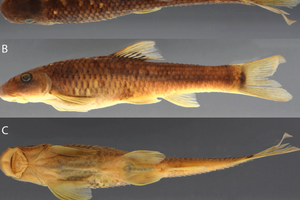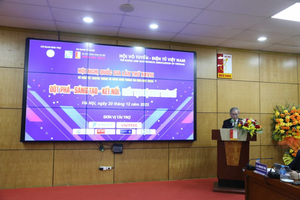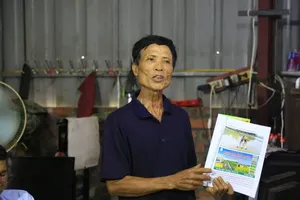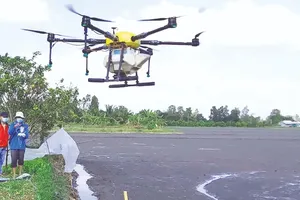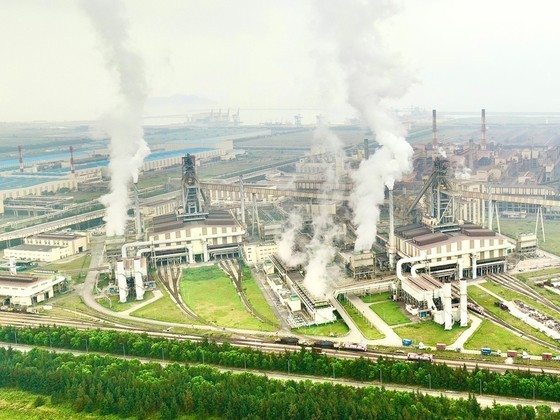 |
Emissions from a manufacturing plant in Vung Ang Economic Zone (Ha Tinh Province – Photo: SGGP) |
CEO of Forest Trends – Vietnam Dr. To Xuan Phuc informed in a recent talk with domestic wood product exporters that businesses in the field are subject to greenhouse effect assessment. According to Decision No.01/2022/QD-TTg by the Prime Minister on sectors, establishments with greenhouse gas emissions subject to greenhouse gas inventory, the six fields having their enterprises checked for greenhouse gas consist of energy, traffic, construction, industry, agro-forestry, and waste treatment.
The conditions that lead to greenhouse gas inventory are as follows:
_Having annual greenhouse gas emissions of over 3,000 tonnes of CO2
_Having a total electricity consumption equal to over 1,000 tonnes of oil per year.
As such, it is estimated that around 2,000 domestic businesses are subject to greenhouse gas inventory twice a year to identify exactly the carbon amount. “If this volume exceeds the limit, enterprises have to either apply technologies to reduce that or buy an equivalent quantity of carbon credits to compensate”, stated Dr. Phuc.
Dr. Ha Huy Tuan from Chu Van An University (in Hung Yen Province) informed that on January 1, 2023, the EU issued the Carbon Border Adjustment Mechanism (CBAM) to be in effect as of January 1, 2023. Accordingly, any businesses outside the EU when selling merchandise to EU countries have to purchase carbon credits equal to those bought by an EU company to cover the emissions embedded in their products. If the importers have already paid for these credits in their home country, they just need to offset the difference or pay no money at all when the fee there is lower or the same as the one in the EU, respectively.
Obviously, CBAM requirements offer a great chance for several domestic businesses, especially in the fields of forest growing, environmentally friendly rice growing, to sell their carbon credits. Statistics of the Natural Resources and Environment Ministry reveal that Vietnamese enterprises have already sold 4 million carbon credits with the value of nearly VND15 trillion (US$638 million), albeit only under the form of conversion to credits for safe production of businesses frequently exporting goods.
The Natural Resources and Environment Ministry reported that until November 2022, Vietnam had 276 green operation projects, creating 29.4 million carbon credits, and 32 gold-standard projects releasing over 5.7 million credits internationally, along with 1.3 million credits from 27 approved projects.
Even though many enterprises have adopted green production to earn carbon credits, but mostly to satisfy requests to sell goods to EU markets. With the commitment for Net Zero Carbon Emissions by 2050 of Vietnam, the country is going to carry out greenhouse gas inventory to increase the awareness of businesses about the global environment. It is expected that this year, there will be an additional 2,000 companies taking part in this Net Zero program.
After the inventory process, related businesses must report its plan on reducing greenhouse gas emissions to functional agencies, which will become a foundation for the latter to assess and then issue carbon credits for the former. Therefore, in 2023, several organizations and communities volunteer to take greenhouse gas inventory for their green production lines.
Gavi Group said that it is preparing necessary documents to join in the green production mechanism to receive carbon credits as soon as possible to have higher-quality rice and give more revenues to farmers. Agreeing with that method, Vice Chairman Nguyen Chanh Phuong of HCMC Handicraft and Wood Industry Association and Ho Van Cu from Preferred by Nature – Vietnam both said that a price of $10 per tonne (1 credit) can bring back much profit to businesses and the community
However, not until 2028 can people receive such a lucrative profit because that will be the time Vietnam introduce a carbon credit trading floor, along with suitable legal and financial policies from the Government.
On January 7, 2022, the Government released Decree No.06/2022/ND-CP stipulating greenhouse gas reduction and ozone layer protection. Accordingly, in 2025, a carbon credit trading floor will be established and piloted. The end of 2027 will welcome regulations on carbon credit management, exchanges between greenhouse gas emissions and carbon credits, and operation rules for the carbon credit trading floor. Finally, in 2028, this trading floor will be officially in operation with corresponding regulations on activities to connect national and international partners in credit exchange.





